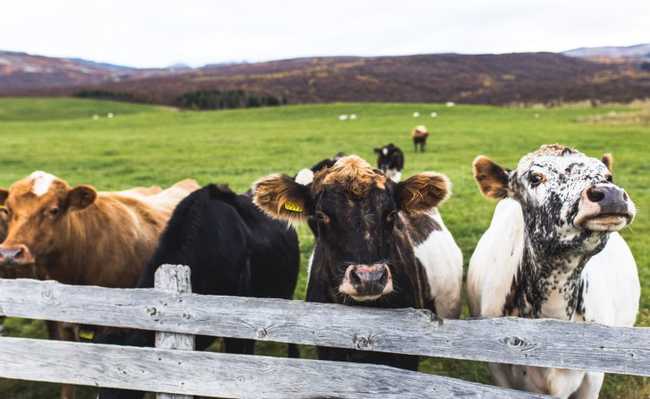Humans represent 0.01% of life on the planet, but we've already destroyed 83% of all wild animals
An unprecedented study mapped the entire Earth's biomass. Despite the tiny percentage, humanity has enormous destructive power over other species

Image: Tim Wright on Unsplash
Humanity is both insignificant and utterly dominant in the grand scheme of life on Earth, revealing an unprecedented mapping of all life on the planet. According to the study conducted by Ron Milo, from the Weizmann Institute of Science in Israel, the 7.6 billion people in the world represent only 0.01% of all living beings on the planet. However, since the rise of civilization, we have already caused the loss of 83% of all wild mammals and half of the world's plants.
- What is biodiversity?
The work, published in the scientific journal Proceedings of the National Academy of Sciences, is the first comprehensive estimate of the Earth's biomass, taking into account each class of living things. The study changes some assumptions we had about the planet's biomass. It has been proven that bacteria, for example, are in fact one of the main forms of life, representing 13% of life on the planet, but plants overshadow all other beings: they are 82% of all living matter. All other creatures, from fungi, insects and fish to humans, account for only 5% of the world's biomass.
Another surprise is that the abundant life in the oceans, which we still barely know, represents only 1% of the planet's entire biomass. Most of the biomass is based on land (86%) and one-eighth of the total (13%) are bacteria that live deep underground.
The new study reveals that poultry farming now represents 70% of all birds on the planet, with only 30% of them being wild. The proportion is even more stark for mammals: 60% of all mammals on Earth are livestock, mainly cattle and pigs, 36% are human and only 4% are wild animals.
Image: Reproduction/Hype Science
The destruction of wildlife habitat for agriculture, logging and development resulted in the beginning of what many scientists consider the sixth mass extinction in history. About half of Earth's animals have been lost in the last 50 years.
Only one-sixth of wild mammals, from mice to elephants, still live, a number that surprised even scientists. In the oceans, three centuries of aggressive fishing have left only a fifth of marine mammals.
Despite human supremacy, in terms of weight, the homo sapiens is irrelevant. Viruses have a combined weight three times that of humans, as do worms. Fish are 12 times larger; insects, spiders and crustaceans, 17 times larger; fungi, 200 times larger; bacteria, 1,200 times; and finally, plants are 7,500 times larger in weight than humans on the planet.
Research method
The researchers calculated biomass estimates using data from hundreds of studies generally based on modern techniques, such as satellite remote sensing (to scan large areas), as well as genetic sequencing, which can unravel the countless microscopic organisms in the world.
They started by assessing the biomass of a class of organisms and then determined in which environments that life could exist on the planet to create a global total. Scientists also used carbon as a fundamental measure and found that all life contains 550 billion tons of the element.
While acknowledging that substantial uncertainties remain in some specific estimates, as in the case of bacteria that live underground, the researchers believe their work presents a useful overview of the distribution of biomass on Earth.
Considering that 70% of all birds are domestic and of all mammals only 4% are wild, it is no wonder that peacocks, elephants and giraffes only appear in zoos and circuses. A more realistic representation of land animals would be many cows and some chickens herded on industrial scale farms.
human impact
According to Paul Falkowski of Rutgers University in the US, who was not part of the research team, this study is the first comprehensive analysis of the biomass distribution of all organisms on Earth and there are two main conclusions we can draw from it: “First, human beings are extremely efficient in exploiting natural resources. Humans have slaughtered and, in some cases, eradicated wild mammals for food or pleasure on virtually every continent. Second, terrestrial plant biomass dominates predominantly on a global scale, and most is in the form of wood”.
Research clearly shows the human impact on the natural world, particularly in what we choose to eat. “Our food choices have a big effect on the habitats of animals, plants and other organisms,” said Milo. “I hope people take this work as part of their worldview. I didn't become a vegetarian, but I consider the environmental impact in my decision making, so it helps me think: do I want to buy beef or poultry or use tofu instead?”.









